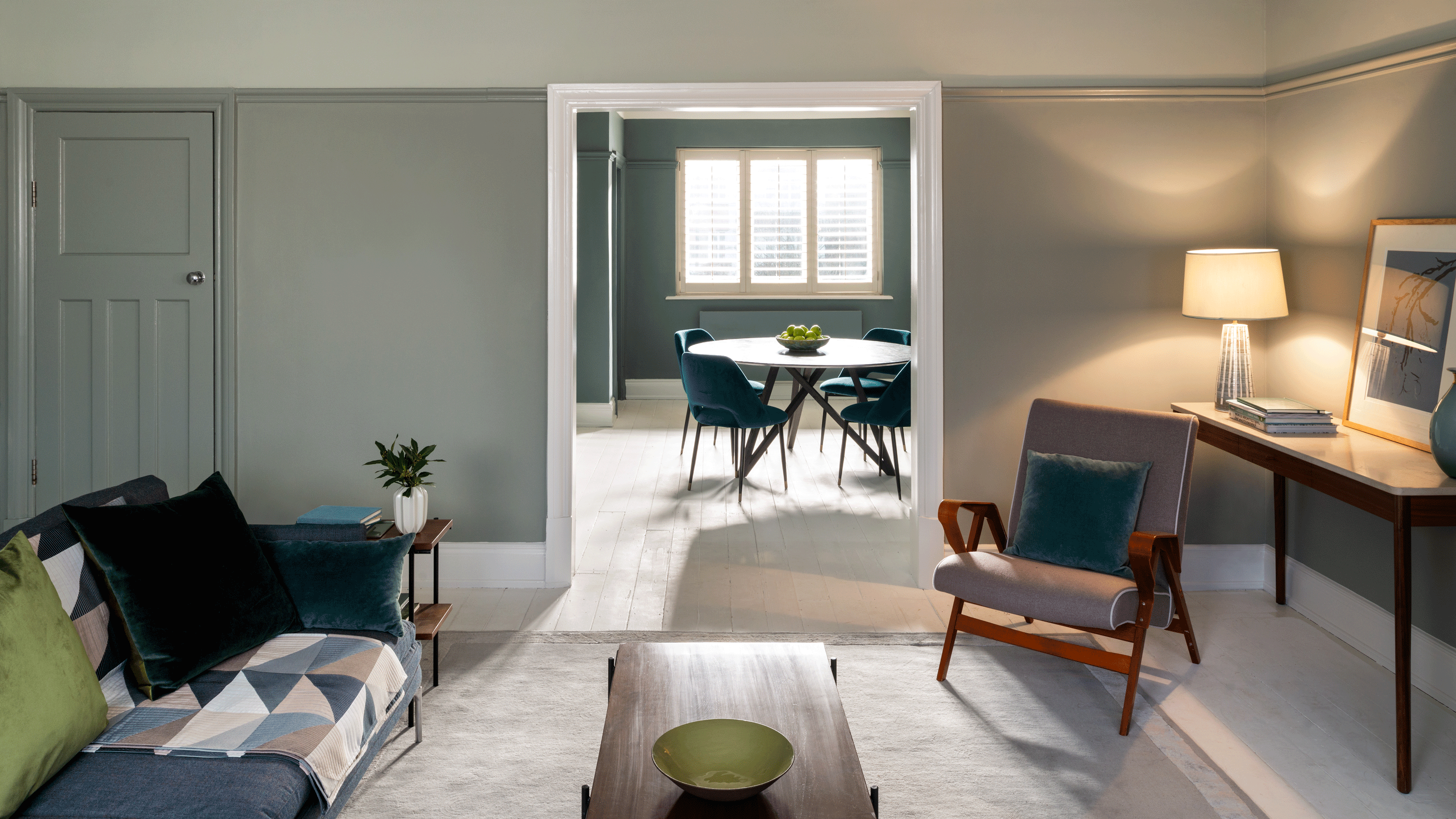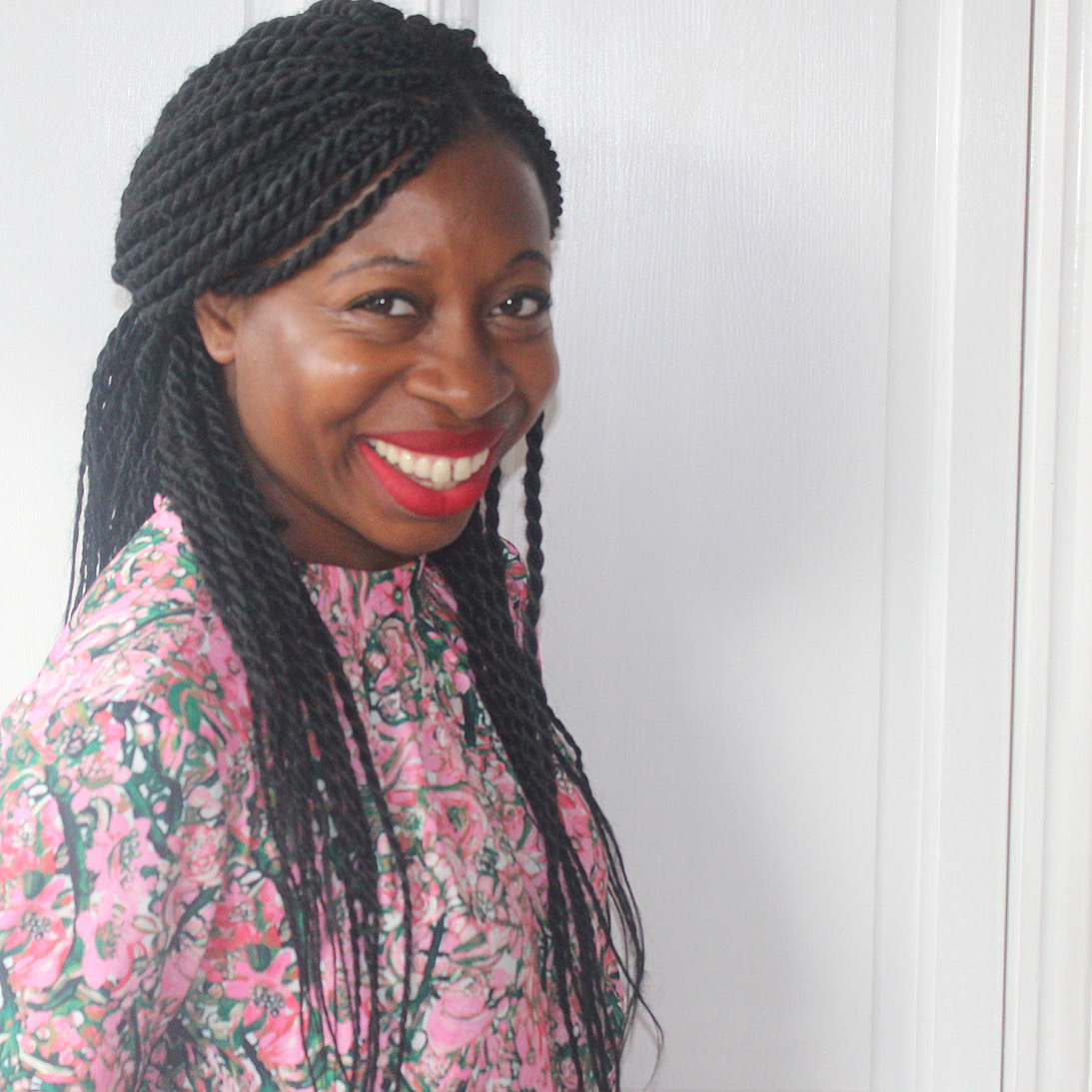Farrow & Ball Pigeon – the best way to use this beguiling neutral, according to designers
Is it blue, green, or even grey? Either way, Farrow & Ball Pigeon is one of the most versatile colors around. Here experts give their tips on decorating with it


The perfect neutral shade can be tricky to get right but there is one perennial favorite when it comes to decorating, and that’s Farrow & Ball Pigeon.
Despite being officially termed a blue-ish grey, for every person who calls it a blue, there is another who will swear it is a soft green. Pigeon does have green, blue, and grey undertones so its complex nature means that it can change color depending on the room orientation. The reality is that a north-facing room is likely to bring out the grey tones while a sun-drenched space tends to enhance the green aspect of the paint. Named after the color of the bird, its unusual mix and timeless quality has turned it into a modern classic and continues to be one of Farrow & Ball’s bestsellers since the shade launched in 1991. It's no surprise it is considered one of the best wall paint colors around.
‘If you want to create a relaxing living space, blue-grey tones work particularly well. This organic color will create rooms that feel both cozy and calming, especially in a low-contrast scheme, and has an extraordinary ability to shift in the changing light reading, blue, grey or even green! Pigeon is also an ideal backdrop to artwork.’ says Charlotte Cosby, head of creative at Farrow & Ball.
Restful and serene, Pigeon has a very restorative effect and which makes it a perfect choice for any room in the house. We spoke to experts on how to get the best out of this unique hue...
1. Create a ‘wraparound’ effect to make a room look bigger

When it comes to painting awkwardly shaped rooms, one cool and clever paint idea is to drench the space in the same shade to enhance it. Pigeon is the perfect modern neutral to use for this, as its restful color means it won’t overwhelm a small space. This serene small bedroom, designed by HÁM Interiors, shows just how much of an impact a single shade can have on a design.
'We like to paint the ceiling, walls, and skirting in the same hue, it stops awkward visual breaks and enhances architectural details in an understated way.' says Tom Cox, co-founder of HÁM Interiors.
‘We like to look at the pigment and depth of color in a paint, too often a shade will have too much grey or brown as an undertone, which can be challenging when layering a scheme and adding furniture. For us, Pigeon by Farrow & Ball has just the right mineral balance, it gives a space a calm and muted quality.’
2. Use it as a way to enhance the woodwork

There is no hard and fast rule that woodwork like skirting boards, door and window frames and stairs need to be white. In fact, painting staircases a different color can make them into an interesting detail and pull the scheme together to create a more refined look.
‘Pigeon is a great color to introduce on your woodwork, such as skirting, stairs or door frames when you use a neutral on all your surrounding walls,’ explains Charlotte Cosby, head of creative at Farrow & Ball.‘This technique highlights accents within the room without being too overpowering and provides a step into color blocking for anyone venturing into using color for the first time.’
3. Layer it with other shades of green

Adding depth is a way to add more interest to a design and a clever way to do so is to introduce darker or lighter shades of the same color. Here Pigeon is complemented by Farrow & Ball’s Mizzle, a soft grey-green, in the adjoining space, and further depth is added with other shades of green on the chairs and cushions.
'What I love about this color is how versatile it is,' says interior designer Enass Mahmoud, founder of Studio Enass. 'It comes across as a blue-grey paint color, however, depending on lighting, it can also give off a soft green shade. Therefore you are able to layer this color with soft blues and pastel colors but also add some warmth by including dark rich tones such as moss green or teal green.'
Interior design studio Simpson & Voyle have recently used Pigeon for a bedroom project and likes the balance it brings to a scheme.
'Pigeon is one of our go-to greens from the Farrow & Ball palette,' says co-founder Angela Simpson. 'Its warm tone and period pigmentation works for any space and more importantly, any scale of room. Soothing on the eye, it has tremendous character, bringing both a sense of nature and elegance. Pigeon is like the trusty, loyal friend everyone needs in their life!'
4. Paint it on kitchen walls as an alternative to grey

Pigeon is a great kitchen color idea because it brings a feeling of tranquility to what can be a very busy family space without going for ‘safer’ options like white or grey. A good kitchen idea is to paint the wall and cabinetry the same color so not only does it unify the look, it also brings tricks the eye into making the area look bigger.
‘Pigeon provides people with a sense of calm and optimism, and when you have a busy lifestyle, your home is your sanctuary,’ says Charlotte Cosby, head of creative at Farrow & Ball. ‘This color is associated with nature – using this shade is the perfect way to introduce a slice of the outside, inside, whilst creating a relaxing environment. A great alternative to grey for kitchen walls - working with an array of surfaces and textures – creating something that feels cosseting and timeless.’
5. Use it in a reading or dining nook for a more cocooning feel

It is often a temptation to paint smaller spaces white to make them appear larger, but leaning into the proportions and making them have a more enveloping feel can provide more impact. Here, in this design by HÁM Interiors, Pigeon is used to warm up a contemplative corner of a dining room and the raspberry-patterned cushion energizes the look.
‘Pigeon is a crowd-pleaser that injects personality into smaller spaces like home offices, bathrooms, cloakrooms, utility rooms and porches, while making larger spaces feel cozy,’ says interiors styling consultant Jane Lee, founder of Jane Lee Interiors. ‘Put it with natural wood, white linen, sheepskins and leather for an ultra-relaxing Scandi-style bedroom or living room.’
6. Incorporate it into wallpaper for subtle pattern

You don’t have to rely on just paint for your walls – Pigeon can be used as part of a wallpaper design to add quiet pattern and soft color to a neutral scheme.
‘We print all our wallpapers using our water-based paint, and Pigeon is a popular ground color for many of our designs,’ says Charlotte Cosby of Farrow & Ball.
The Feathergrass, in particular, is so versatile as it works in numerous areas of the home but especially in living rooms and dining rooms as the pattern borders your seating making you feel like you are dining/relaxing amongst nature all year round.
7. Make it the perfect backdrop for colourful art

One of the biggest draws of Pigeon is its versatility – it works alongside many room schemes with ease.
While it has a strong presence in its own right, it is also subtle enough to let other elements in a room to take center stage. The grey undertones in particular mean it is the ideal wall paint to support bursts of color and a great alternative to shades of white. ‘Pigeon is an ideal backdrop to artwork.’ says Charlotte Cosby. So perhaps use it as a starting point of a gallery wall which will add color and interest to your home.
8. Allow it to complement various wood tones

If you have wood features, Pigeon is the perfect color choice to enhance them and inject a contemporary feel. This is why it is a popular paint for US-based studio Park and Oak Interior Design founded by Christina Samatas and Renee DiSanto.
‘The ideal blend of not-quite-green and not-quite grey, we often turn to Farrow & Ball’s Pigeon as a nearly-neutral for those still wanting a little pop of color,’ they say. ‘Its saturation level is the perfect complement for the wood tones we love, and also plays nicely with other shades we choose frequently, like navy and rust. Try it for cabinetry, or as a backdrop with neutral furnishings. We love its versatility in almost any room for any application.’
Is Farrow & Ball’s Pigeon green or blue?
There is much debate about whether Pigeon by Farrow & Ball is green or blue. The truth is that Pigeon is a bit of a chameleon and can be either depending on the light of the room which is why it is important to try a sample before you fully commit.
‘Whether it has more of a tinge of blue, grey or green is the subject of heated debate,’ says interiors stylist Jane Lee. 'It really depends on the amount of natural light that’s bouncing around the space: I think of it as a strong blue-grey with a touch of green about it. ‘
What colors go best with Farrow & Ball’s Pigeon?
There are many colors that can be paired with Pigeon by Farrow & Ball, says interiors stylist Jane Lee. ‘Team with the lighter Dimpse, Shaded White, Slipper Satin, Cromarty or Blue Gray, all by Farrow & Ball. If you’re embracing the trend for brown, pair with Old White and Salon Drab.’
Be The First To Know
The Livingetc newsletter is your shortcut to the now and the next in home design. Subscribe today to receive a stunning free 200-page book of the best homes from around the world.
As the Deputy Editor of Livingetc, Busola Evans works across both print and digital and specialises in kitchens, bathrooms and projects. She is an expert at explaining how to improve, extend and convert your home. Prior to her current role, she was Associate Editor on both Livingetc and Homes & Gardens. A journalist for more than 20 years, she has written for a number of newspapers and magazines including The Guardian, The Sunday Times Magazine and Grazia, and was an interiors columnist for the London Evening Standard's ES Magazine.
-
 How to Thaw a Frozen Pipe — Learn Everything You Need to Know in 5 Minutes With This Guide
How to Thaw a Frozen Pipe — Learn Everything You Need to Know in 5 Minutes With This GuideWinter storm caught you off guard? We asked an expert — just how do you thaw a frozen pipe?
By Hugh Metcalf Published
-
 The 12 Very Best Silk Bedding Pieces — As Our Style Editor Says: 'It's What Dreams Are Made Of!'
The 12 Very Best Silk Bedding Pieces — As Our Style Editor Says: 'It's What Dreams Are Made Of!'Slumber in lustrous luxury with the very best silk bedding sheets, duvets, pillowcases, and more — your sleep score will thank us later
By Julia Demer Published

